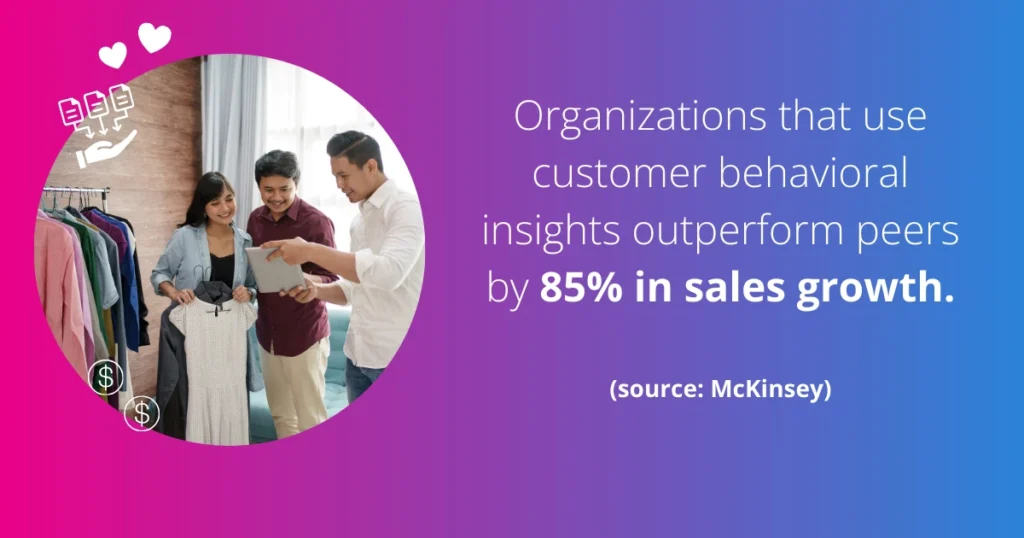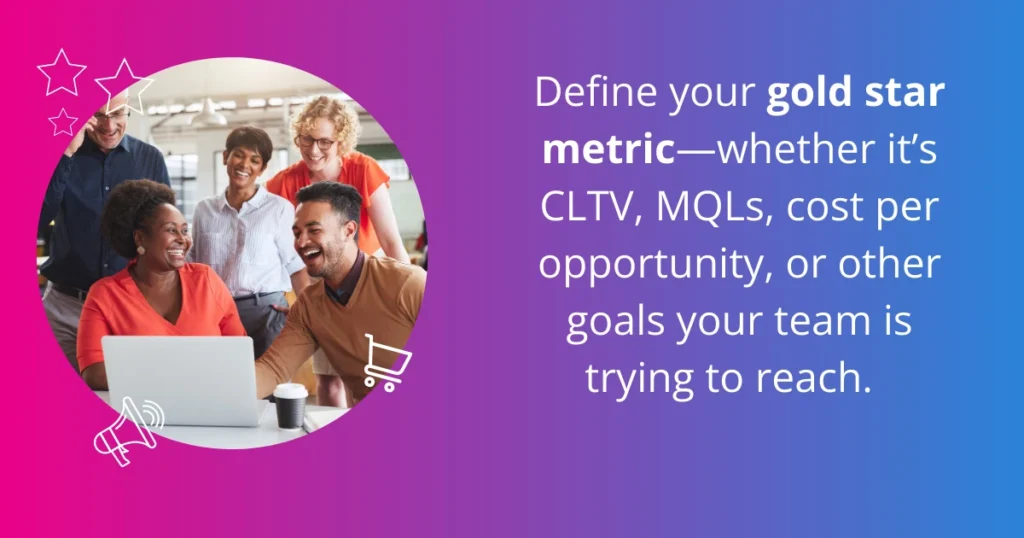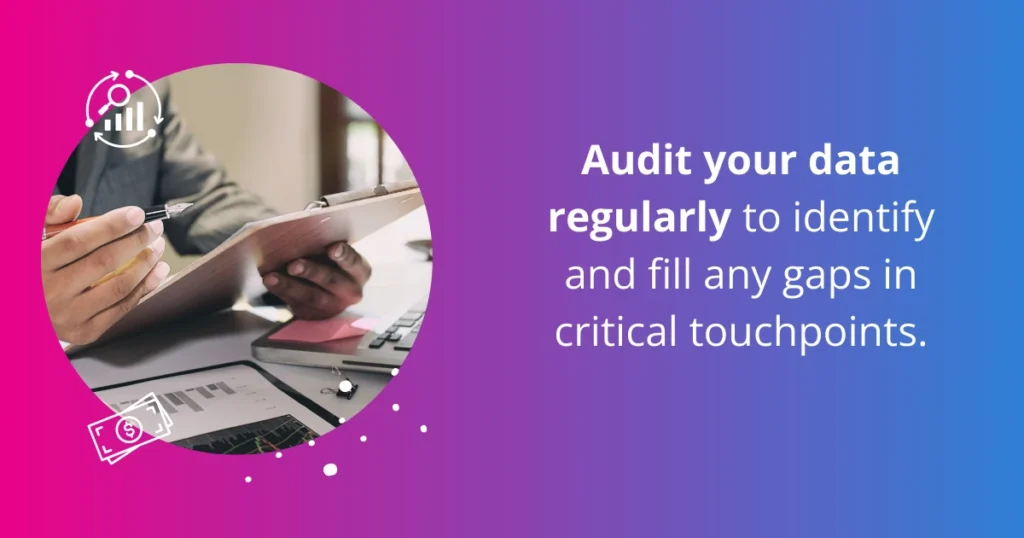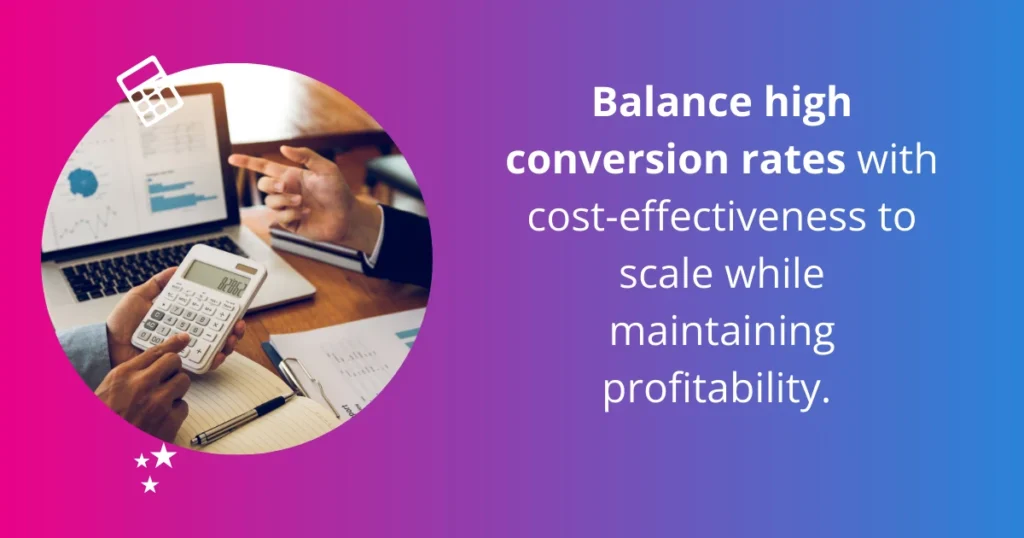As a demand generation manager, you constantly juggle multiple campaigns, channels, and metrics. One of the biggest challenges you face is cutting through the noise to identify which strategies truly drive results. Without clear insights, it’s all too easy to pour resources into tactics that sound good but fail to deliver.
This is where data-driven decision-making becomes your secret weapon. By leveraging the right data, you can pinpoint exactly what works for your audience and what doesn’t. No more relying on gut feelings or following industry trends blindly. With data, you can confidently make decisions that will lead to higher conversions, better ROI, and a more successful strategy.
Let’s explore how to make every marketing dollar count and every effort hit the mark.
Why data-driven demand generation matters
Success in marketing doesn’t come from throwing strategies at the wall to see what sticks. It’s driven by precision, focus, and understanding exactly what works. Here’s how data can provide the insights needed to make smarter decisions.
Provides clearer insight into what works (and what doesn’t)
Data gives your team a crystal-clear view of which campaigns, programs, and channels are pulling their weight. No more guessing or hoping a strategy will stick. With data in hand, you can quickly spot what’s driving results and cut out what’s not. This eliminates wasted time and budget, ensuring your resources go toward efforts that deliver.
According to McKinsey, organizations that use customer behavioral insights outperform peers by 85 percent in sales growth. They also see more than a 25 percent increase in gross margin, proving that data-driven decisions pay off.

Creates greater team alignment on the same goals
Data also brings together content, product, design, and other teams around shared goals. For example, if your marketing team identifies high-performing channels, the content team can focus on creating content for those channels. Meanwhile, the product team can adjust updates based on customer insights.
When everyone works with the same data, they rally around shared objectives. This alignment boosts collaboration as every team’s efforts contribute to the broader strategy.
The challenges of integrating data into demand generation
Not everything about data-driven demand generation is smooth sailing. Here are some bumps you might encounter along the way.
Inconsistent tracking
There are so many tools, such as Salesforce, HubSpot, and Zoho CRM, and so many data points, such as website traffic, conversion rates, and customer engagement metrics, that tracking them all consistently can feel overwhelming. Without a clear process, things can quickly get tangled.
This can lead to inconsistent or missing data, making it difficult to analyze performance and take corrective action. That’s why businesses need reliable systems like automated dashboards to keep everything aligned.
Getting everyone on the same page
Different teams have different priorities. What’s important to marketing might not seem as crucial to your product or content team. Without unified metrics, each department may chase its own goals, causing misalignment.
That’s why it’s essential to define a common metric that everyone can rally around. A shared goal aligns efforts and drives better results across the board. Without it, you’re just spinning your wheels and risking inefficiency. Clear communication and shared metrics make all the difference.
How to get started using data for demand generation
Start from the bottom and build your strategy step by step. Effective demand generation relies on mastering the fundamentals before scaling up. Here’s how you can use data to improve demand generation decisions without making your head spin.

Define your “golden star” metric
What’s the ultimate goal? Is it creating opportunities for your business? Is it all about driving revenue?
Define that golden star metric, and figure out how you’ll measure efficiency against it—be it the cost per opportunity or the revenue generated. Once you have clarity, align your resources and teams around this metric to drive focused efforts and meaningful results.
Track the entire buyer’s journey
Data is more than just a snapshot in time. Track everything from point A (the first interaction) to point Z (conversion). How efficient are you at moving people through the funnel? Measure each step to see where you can improve.
This holistic view helps identify bottlenecks and optimize each stage of the process, ensuring nothing falls through the cracks and driving better overall performance.
Find the right data sources for demand gen analytics
Not all data is created equal, and it’s important to focus on what truly matters. Here’s how to identify the most valuable data for driving demand generation
Connect data to the golden star metric
Always tie your data back to that central metric. Focus on things like lead volume, conversion rates, and the cost of capturing these leads. You want the metrics that show you’re moving in the right direction.
Regularly revisiting and refining this focus keeps your efforts aligned with your core objectives. Collecting data alone isn’t sufficient—it should directly inform and enhance your demand generation strategy.
Check for gaps in your current data
Assess your data sources, whether it’s your CRM, website data, or social media channels. Are you missing something important? Identify any gaps, and find ways to fill them so that all your efforts tie back to your main goal.
Auditing your data regularly to identify and fill gaps in critical touchpoints is crucial. This practice provides a more comprehensive and actionable view of your demand generation performance.

Keep it consistent
Data inconsistency is a killer. Regularly cross-check your data to verify consistency across different sources. Trust in your data forms the foundation for solid decision-making. Inconsistent data can lead to misinformed choices, potentially derailing your efforts.
Establish a regular review process to establish consistency and accuracy, giving your team the confidence to act on reliable insights.
The most valuable types of data for demand generation
You’ve got a ton of data, but how do you figure out which pieces are actually driving your demand generation efforts forward? Here are the four types of data that should be at the core of your decision-making.
Touch-point data
Where are users coming from? What’s bringing them back? This data shows how users interact with your content and what keeps them engaged. It tracks every point of contact between a potential customer and your brand, from the first ad they see to the final checkout process.
Touch-point data helps you understand the full customer journey and highlights the most effective interactions in pushing people through the funnel.
Cost data
What’s the price of bringing users through the buying journey? Some channels are more efficient than others. Cost data helps you determine how much you’re spending to get a lead from point A to point Z. By analyzing this, you can identify which channels offer the highest ROI and which drain your resources without delivering results.
Efficiency data
How effective are your strategies at driving action? Efficiency data measures how likely users are to engage with your content and take action—whether they’re clicking on links, completing forms, or converting to leads. This data helps you assess the effectiveness of your demand generation programs and identify areas for improvement, ensuring that you are optimizing your resources for better performance.
Revenue data
What’s the payoff? Revenue data tells you how much money your efforts are bringing in, making it one of the most critical pieces of the puzzle. It measures the financial outcomes of your demand-generation activities and helps you assess the overall success of your campaigns. Revenue data can also highlight which parts of the funnel are most profitable, allowing you to focus your efforts where they make the biggest impact.
Best practices for using data in demand generation
Now that you know what data to look for, here’s how to use it effectively.
Focus on channel volume and efficiency
Which channels are driving the most volume? More importantly, which ones are the most efficient? Find the sweet spot between volume and efficiency, and focus your efforts there. Balancing high conversion rates with cost-effectiveness will allow you to scale while maintaining profitability and long-term growth.

Keep an eye on competitors
What are your competitors doing? Don’t just focus on yourself. Monitoring industry benchmarks can give you valuable insight into whether your data is hitting the mark.
For example, if a competitor’s social media generates significantly higher engagement, it may signal an opportunity to adjust your content approach or focus on a different platform. Studying competitor performance helps you identify opportunities and gaps in your own strategy, allowing you to stay ahead.
Review and refine regularly
Data isn’t static, and your strategies shouldn’t be either. Regularly review your data and refine your workflows. Stay agile, and respond fast to changes in the market or shifts in customer behavior. Continually refining based on real-time insights ensures your approach stays effective and adaptable to industry trends.
Put your data to work for your team
The real power of data lies in its ability to transform how your business functions, making your demand generation approach more agile, efficient, and adaptable to change. Take charge of your data, and you’ll open opportunities to drive success and sustainable growth.
However, it’s important to remember that the market doesn’t stand still, and neither should your strategy. Regularly revisit your data, question your assumptions, and be ready to pivot when necessary. Your competitors likely use data too, so staying ahead means constantly refining your approach.
Most importantly, don’t let the pursuit of perfect data paralyze you. Start with what you have, fill in the gaps as you go, and always keep your eye on that “golden star” metric. With each decision you make and each insight you uncover, you’re building a more agile, responsive, and successful marketing machine.




